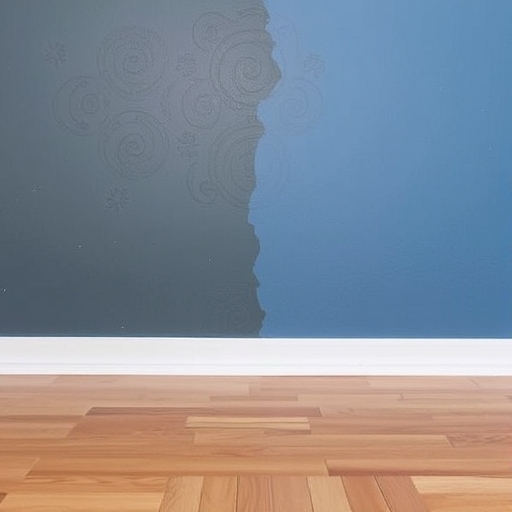Does Paint Dry Darker or Lighter?
Choosing the right paint color for your home or project can be a daunting task. One common question that arises during this decision-making process is whether paint dries darker or lighter than its wet appearance. Understanding how paint behaves as it dries is crucial for achieving the desired aesthetic. In this article, we will explore the factors that influence paint drying, the science behind paint drying colors, and practical tips to ensure you get the finish you want.
Understanding How Paint Dries
The Science Behind Paint Drying
Paint consists of several components, including pigments, binders, solvents, and additives. When paint is applied, the solvent evaporates, leaving behind the solid components that create the color and finish. The drying process can be broken down into two primary phases:
1. Evaporation: The solvent evaporates, which causes the paint to become less glossy and start to harden.
2. Curing: The paint continues to harden and adhere to the surface, which can take days or even weeks depending on the type of paint and environmental conditions.
Factors Affecting Drying Color
Several factors can influence whether paint appears darker or lighter once it dries:
- Type of Paint: Different types of paint (latex, oil-based, etc.) have different drying properties.
- Finish: The sheen level (matte, eggshell, satin, semi-gloss, gloss) can affect how light reflects off the surface.
- Environmental Conditions: Temperature, humidity, and air circulation can all impact the drying time and final appearance.
- Base Color: The color of the surface being painted can influence how the paint looks when dry.
- Thickness of Application: The amount of paint applied can also affect the final color.
- Dark Colors: Dark paints often dry darker due to the concentration of pigments. This is particularly true for deep colors like navy blue or forest green.
- Light Colors: Light colors, such as pastels, might dry slightly lighter, but this can vary based on the specific pigment and formulation.
- Glossy Finishes: Glossy finishes tend to reflect more light, which can make them appear lighter when wet and darker when dry.
- Use Test Samples: Purchase small sample pots of your chosen colors and paint a small section of your wall.
- Observe at Different Times: View the samples in various lighting conditions (natural light, artificial light) and at different times of the day to see how the color changes.
- Matte: Absorbs more light, which can make colors appear lighter.
- Satin: Reflects some light but not as much as gloss finishes, can appear more true to color.
- Gloss/Semi-Gloss: Reflects a lot of light, which can make colors appear darker.
- Primed Surfaces: If you are painting over a primed surface, the color may appear truer to the chip.
- Unprimed Surfaces: Darker unprimed surfaces can absorb more light and make the paint appear darker.
- High Humidity: Can slow down the drying process and may lead to a darker appearance.
- Low Humidity: Helps paint dry quicker and can sometimes lead to a lighter finish.
- Temperature: Warmer temperatures typically speed up evaporation, while colder temperatures can slow it down.
- Ventilation: Ensuring that the area is well-ventilated can help paint dry evenly and maintain its intended color.
- Avoid Stagnant Air: Stagnant air can lead to uneven drying and color inconsistencies.
Does Paint Dry Darker or Lighter?
General Trends
In general, most paints tend to dry slightly darker than their wet appearance. However, this is not a hard and fast rule. Here are some considerations:
Paint Types and Their Behavior
| Type of Paint | Drying Behavior |
|---|---|
| Latex | Often dries lighter, but can vary |
| Oil-Based | Generally dries darker |
| Chalk Paint | Usually dries lighter due to the matte finish |
| Acrylic | Tends to dry darker, especially with darker shades |
Tips for Choosing Paint Colors
Sample Before You Commit
One of the best ways to determine how a paint color will look when dry is to sample it. Here’s how:
Consider the Finish
The finish of the paint can significantly affect the final color:
Take the Surface into Account
The surface you are painting can also affect the final color:
Environmental Considerations
Humidity and Temperature
The environment plays a critical role in how paint dries:
Air Circulation
Good air circulation helps with the drying process:
Final Thoughts
Choosing the right paint color is not just about selecting a hue; it involves understanding how that color will behave when dry. While most paints tend to dry darker, various factors such as the type of paint, finish, environmental conditions, and application thickness can influence the final appearance.
Frequently Asked Questions (FAQ)
Q1: Can I mix different types of paint?
A1: It’s generally not recommended to mix different types of paint (e.g., oil-based with latex) as it can result in poor adhesion and an uneven finish.
Q2: How long does paint take to dry?
A2: Drying times vary by type but generally, latex paints dry to the touch in 1-2 hours, while oil-based paints can take up to 6-8 hours.
Q3: What should I do if I don’t like the color after it dries?
A3: If the color is not what you expected, you can consider repainting with a different color or applying a topcoat to adjust the hue.
Q4: Does the sheen affect color appearance?
A4: Yes, different sheens can reflect light differently, affecting how light or dark the color appears once dry.
Conclusion
In summary, whether paint dries darker or lighter is influenced by a multitude of factors, including the type of paint, the finish, the conditions under which it dries, and the surface being painted. To achieve the best results, it’s essential to test samples, consider environmental conditions, and choose the right finish. With careful planning and consideration, you can ensure that your chosen paint color meets your expectations and enhances your space beautifully.

